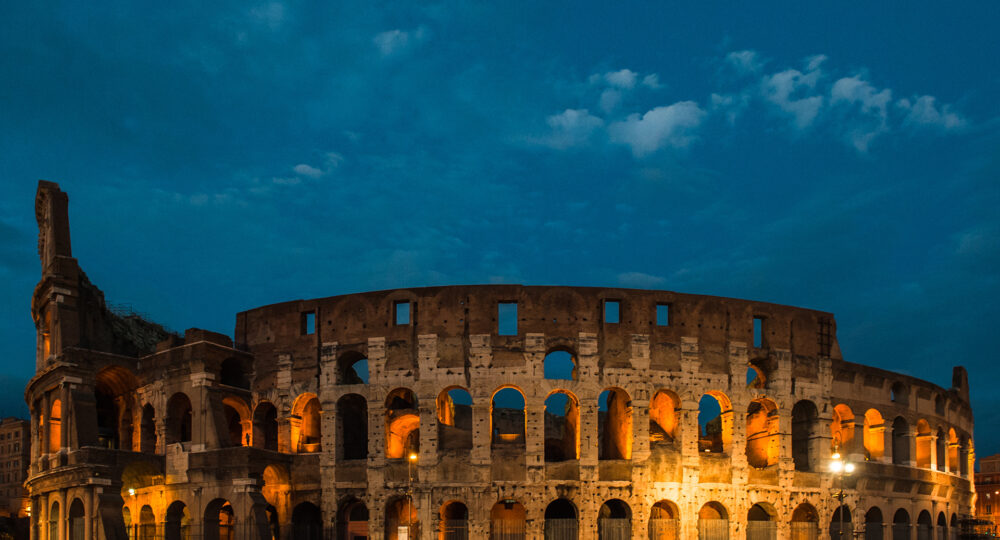
Historical Colosseum at night in Roma, Italy
Engineering Marvels of the Roman Empire: Inspiring Demonstration for the Modern Era
The Roman Empire, a beacon of architectural and engineering prowess, has left an indelible mark on the landscape of modern engineering. This essay delves into the Roman Empire’s extraordinary engineering feats, such as aqueducts, roads, royal palaces, bridges, and the Colosseum. Each of these marvels showcases the Romans’ advanced technical knowledge and their enduring impact on contemporary engineering practices.
Aqueducts: Lifelines of a Civilization
Roman aqueducts, monumental in both ambition and execution, exemplify engineering ingenuity. These structures, designed to transport water across vast distances, employed principles of gravity to maintain a steady, downhill flow. The aqueducts, often supported by towering arches, symbolised Roman engineering acumen. The famous Aqua Appia, Rome’s first aqueduct, and the magnificent Pont du Gard in France remain testaments to this ancient mastery. These aqueducts influenced modern water supply systems, underscoring the importance of efficient, large-scale distribution networks.
Roads: Pathways to Power
The extensive network of Roman roads, spanning over 250,000 miles at the empire’s zenith, was crucial for military movement, trade, and administration. Constructed with sand, gravel, and stone layers, these roads demonstrated remarkable durability. The Via Appia, one of the earliest and most strategic roads, still partly exists as a testament to Roman engineering foresight. Modern road construction echoes these ancient techniques, emphasising robust foundations and effective drainage systems.
Palatial Prowess: Symbols of Imperial Might
Roman royal palaces, epitomised by the opulent Domus Aurea, were marvels of luxury and engineering. These palaces showcased advanced techniques in using concrete and architectural design materials, including domes and vaults. Their grandeur and complexity influenced modern architectural styles, particularly in constructing government buildings and luxury residences.
Bridges: Bridging the Ancient and Modern Worlds
Roman bridges, known for their strength and longevity, employed arch designs that efficiently distributed weight. The Alcántara Bridge in Spain and the Ponte Sant’Angelo in Rome highlight the Romans’ mastery of bridge construction. These structures have inspired contemporary bridge design, focusing on durability and load-bearing efficiency.
The Colosseum: An Icon of Architectural Brilliance
The Colosseum, a monumental amphitheatre in the heart of Rome, stands as perhaps the most iconic of Roman engineering achievements. With its complex system of vaults and arches, it could accommodate around 50,000 spectators. The Colosseum’s design allowed for quick entry and exit of large crowds and has influenced modern stadium architecture. Its use of concrete and sophisticated structural elements is mirrored in many large-scale public buildings today.
The engineering marvels of the Roman Empire, from the awe-inspiring aqueducts to the majestic Colosseum, have not only stood the test of time but have also profoundly influenced modern engineering. These ancient achievements remind us of the enduring power of human ingenuity and the timeless nature of innovation. The Roman legacy in engineering continues to serve as a foundation and inspiration for contemporary architects and engineers, bridging the past and present in an unbroken arc of excellence.









